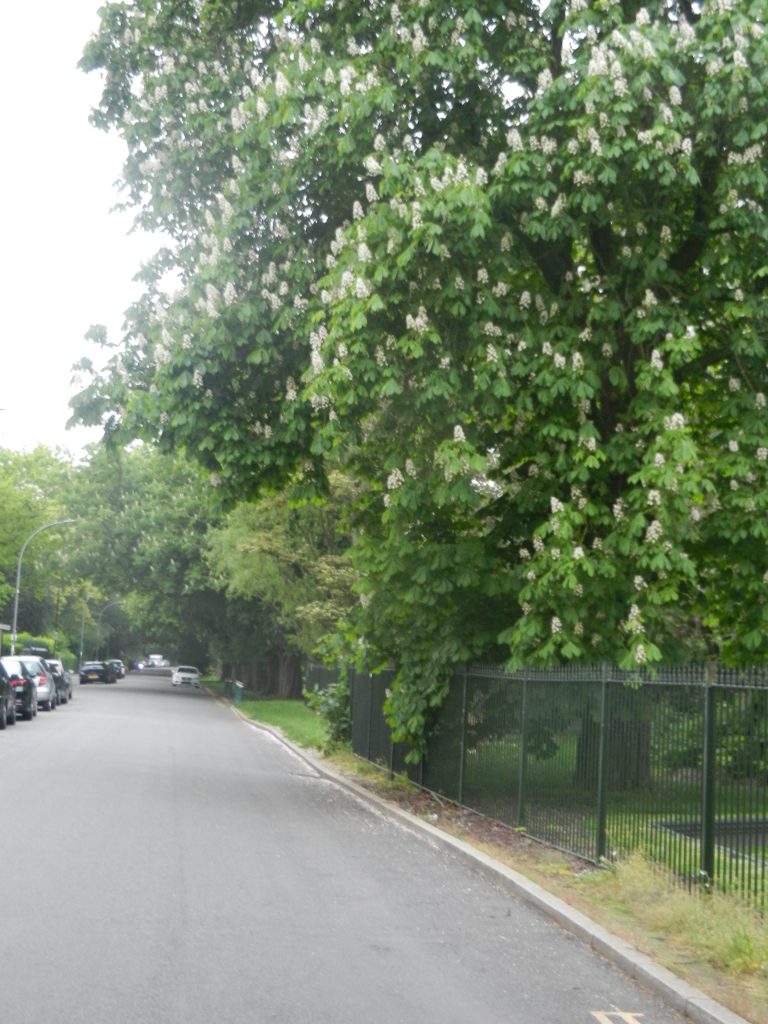
The photo above shows the partial avenue of Horse Chestnut trees on the south side of Pearson Park, Hull. Seen at their best at this time of year, horse chestnut trees’ leaves have the shiny green of spring growth and the bold pyramidal clusters of white flowers. These trees normally have short trunks and, as the lower branches are often horizontal, the lower foliage often has to be cut back to allow passage of pedestrians or motorised vehicles. Higher up the tree the branches are more angled and the lofty canopy (of old trees) usually forms a rather untidy roundness.
As in many municipal parks the horse chestnut was the first choice for the creation of avenues. In fact the avenue in West Park alongside what was the original central carriageway before the MKM stadium (originally KC stadium) was built, is more impressive than the one in Pearson Park as is the central carriageway at East Park. Here, in both cases, the over-hang from both sides of the walkway creates mottled shade in sunny conditions.
‘Carriageway’ is the correct term, even though now only Park’s Department vehicles are allowed along them. Ironically, when the people’s parks were created, wide central and peripheral carriageways were deliberately created as a facility for those who owned a carriage and wished to visit the park in them; however, they were expected to travel at a gentle trot or walk so as to not pose a danger to the pedestrians who would have been in a considerable majority.
It is also ironic that whereas in Pearson Park the peripheral carriageway was a facility for the period houses lived in around the Park, no such houses were built in West or East Parks.
We had a reminder of such things with King Charles III riding down the Mall following his recent coronation (an area that was once a royal hunting park), although the carriages in Hull were probably not gold veneer.